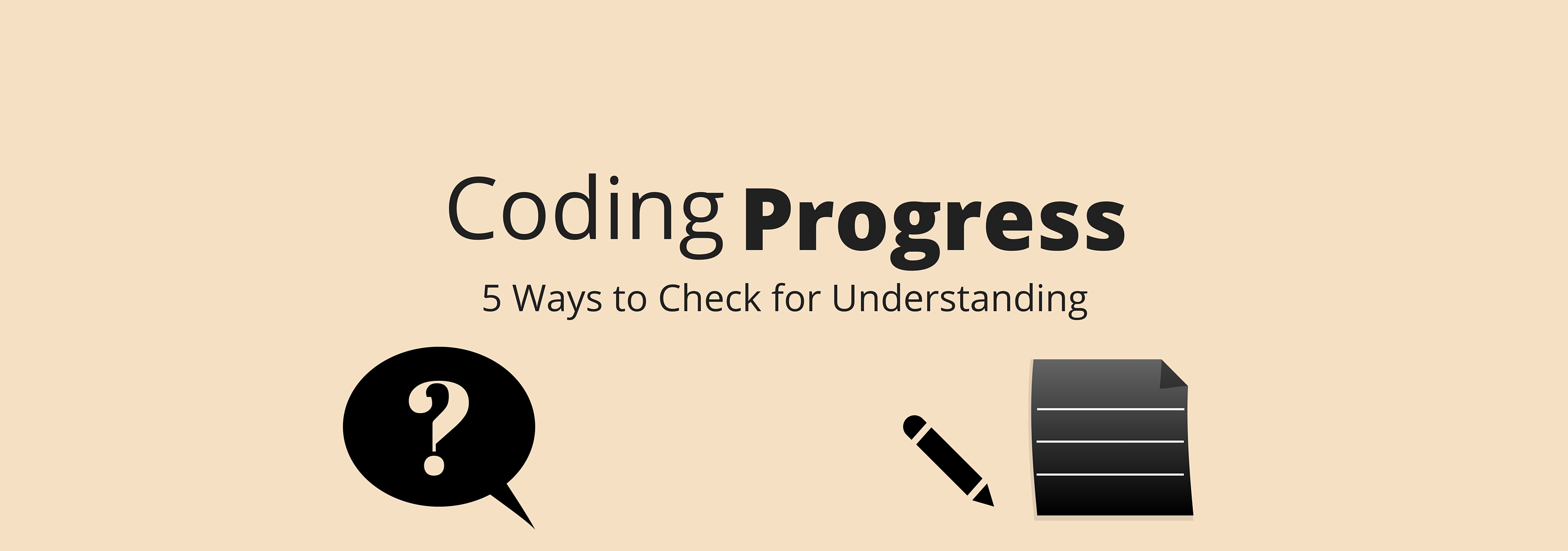Teachers are constantly required to gauge student learning and report on student progress. To do this, we confer with students, do whole group checks throughout lessons, and constantly assess student learning formally and informally.
With coding, teaching resources can be limited, and there aren't too many teachers that are Computer Science experts on the side. How can progress be measured without the instructor having some level of coding knowledge? A good starting point is recognizing that teachers can (and should!) check for understanding in coding like any other content area.
We've put together 5 ways teachers can monitor student progress in coding- checks for understanding that can be applied to coding like any subject:
1. Ask Questions
It's easy to think that a student using a coding app or program knows what they are doing as they progress through levels. Passing levels does not mean that a student fully understands what they did. Asking students to explain what they are doing requires critical thinking and helps students make sense of what they are learning.
Basic questions to ask students to check for understanding:
- "What concept are you working on? Tell me more about __ ..."
- "What do you think you should do next?"
- "What will happen if you do (x)?"
- "Why do you think (x) is the best move?"
2. Quick Sketch
A visual representation of a concept:
- Students spend one minute doing a quick sketch of the concept they are learning about
- Share: In pairs or groups, student explain the concept that they sketched
Teachers can collect sketches, and should listen to students explain to each other in groups.
3. Letter to a Friend
Have students teach a friend about a coding concept they've been taught.
Ask them to include:
- The concept they're learning about
- Programming terms and vocabulary
- One challenge they experienced and had to work through
- One success they had or their favorite lesson
4. Stuck in the Mud
Write and draw: Students reflect on their biggest challenge in coding and how they got through it.
Students are very unlikely to breeze through apps and programs without having to try a few times to get through levels. Cultivating an environment that promotes perseverance will help students accept that challenge and failure are elements of success in coding.
5. Define a Concept
Give each student a post-it, index card, or small piece of paper to write their name and definition on. Have students define the concept they are learning about, and collect it or use it as an exit ticket on their way out of class.
Below, access our examples of student reflections and checklists that you can use to monitor and track progress. We've included teacher questions for conferring with students, and checklists for sharing student progress with parents and administrators.


Get even more tools like these! Try our curriculum - enroll your class for free.
Measuring progress can eat up a lot of your valuable classroom time. Check out our post on assessment tools for elementary teachers to see how you get more time back in your day and get the data you need.


